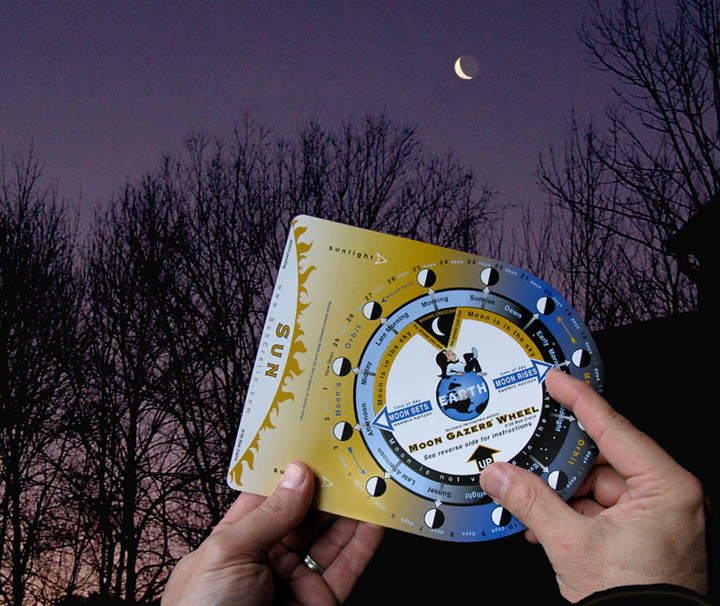Difference between revisions of "August 6, 2009"
(Created page with "__NOTOC__ =Where is That Moon?= <!-- ws:start:WikiTextHeadingRule:2:<h1> --> <!-- ws:start:WikiTextLocalImageRule:12:<img src="/file/view/LPOD-Aug6-09.jpg/83...") |
|||
| Line 6: | Line 6: | ||
<em>image from [mailto:bcrelin@comcast.net Bob Crelin]</em><br /> | <em>image from [mailto:bcrelin@comcast.net Bob Crelin]</em><br /> | ||
<br /> | <br /> | ||
| − | Planispheres have been around for generations, guiding users through nightly and seasonal starfields, so why is it only now* that a Moonisphere has come into existence? There are of course the more nerdish [mailto:tychocrater@yahoo.com Chuck Wood]</em><br /> | + | Planispheres have been around for generations, guiding users through nightly and seasonal starfields, so why is it only now* that a Moonisphere has come into existence? There are of course the more nerdish [http://www.lpod.org/?m=20070426 MoonStick] (I love it!) and [http://www.lunawheel.com/# LunaWheel] for calculating the phase of the Moon on specified dates, but this new Moonwheel is meant to help with more entry level questions. The <em>Moon Gazers' Wheel</em>, to use its full name, is an easy way to understand the phases of the Moon and plan when to find it in the sky. Some amateur astronomers may think that this is an unnecessary tool, but in fact understanding the phases of the Moon is almost deemed too hard to understand by some. A famous [http://www.learner.org/resources/series28.html video] asked graduating Harvard students to explain the Moon's phases and many could not. The <em>Moon Gazers' Wheel</em> is aimed at teachers and school kids who want to learn the relationship between the shape of the Moon, and the time of day or night. The wheel's creator, Bob Crelin, has also written a lovely children's [http://www.amazon.com/Faces-Moon-Bob-Crelin/dp/157091785X/ref=sr_1_1?ie=UTF8&qid=1249524384&sr=8-1 book] explaining phases, but his Moon wheel stands alone, and may finally teach kids (and their parents and teachers) about the movement of that marvelous satellite around our globe.<br /> |
| + | <br /> | ||
| + | <em>[mailto:tychocrater@yahoo.com Chuck Wood]</em><br /> | ||
<br /> | <br /> | ||
<strong>Technical Details</strong><br /> | <strong>Technical Details</strong><br /> | ||
Revision as of 20:44, 1 January 2015
Where is That Moon?
image from Bob Crelin
Planispheres have been around for generations, guiding users through nightly and seasonal starfields, so why is it only now* that a Moonisphere has come into existence? There are of course the more nerdish MoonStick (I love it!) and LunaWheel for calculating the phase of the Moon on specified dates, but this new Moonwheel is meant to help with more entry level questions. The Moon Gazers' Wheel, to use its full name, is an easy way to understand the phases of the Moon and plan when to find it in the sky. Some amateur astronomers may think that this is an unnecessary tool, but in fact understanding the phases of the Moon is almost deemed too hard to understand by some. A famous video asked graduating Harvard students to explain the Moon's phases and many could not. The Moon Gazers' Wheel is aimed at teachers and school kids who want to learn the relationship between the shape of the Moon, and the time of day or night. The wheel's creator, Bob Crelin, has also written a lovely children's book explaining phases, but his Moon wheel stands alone, and may finally teach kids (and their parents and teachers) about the movement of that marvelous satellite around our globe.
Chuck Wood
Technical Details
- Maybe there have been earlier ones - does anyone know of any?
Related Links
The Moon Gazer's Wheel is available here.
COMMENTS?
Click on this icon File:PostIcon.jpg at the upper right to post a comment.




